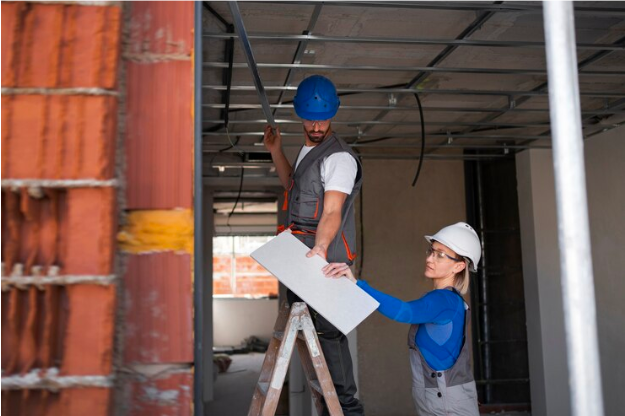Selecting the best materials for property upgrades requires a thorough process. Begin by defining upgrade goals, considering factors like energy efficiency, aesthetics, and functionality. Account for property specifics, such as location, climate, and purpose, to guide material selection. Establish a realistic budget, consult with professionals for technical and compliance guidance, and prioritize durability and longevity. Assess environmental impact, choose sustainable solutions when possible, and test samples in your property’s conditions. Review case studies, anticipate future maintenance needs, and ensure compliance with local regulations to avoid issues. Integrating these considerations allows for informed decisions aligned with your objectives, ultimately enhancing overall property value.

Strategic Investments: The Impact of Premium Building Upgrades in Commercial Properties
Embarking on a journey of enhanced commercial property value involves strategic choices in top-tier building upgrades. The selection of materials plays a pivotal role in achieving longevity, durability, and reduced maintenance costs. Energy-efficient materials contribute not only to cost savings but also to environmental sustainability. Integrating modern technologies elevates operational efficiency and enhances occupant comfort. The aesthetic appeal of well-maintained structures attracts tenants and customers, positively impacting market value. Ensuring compliance with safety standards and bolstering resilience to environmental factors are paramount considerations that minimize risks and legal issues. This commitment to superior upgrades not only increases the overall value of the property but also provides a competitive edge in the market, aligning seamlessly with societal expectations for environmentally responsible practices.
Key Commercial Property Upgrades
Roofing Materials
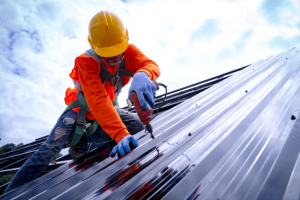
As the initial shield against the elements, the roof stands as a key candidate for potential upgrades. Opting for top-tier roofing materials not only enhances protection but also contributes to improved energy efficiency. Explore alternatives like cool roofing membranes, designed to reflect sunlight and minimize heat absorption, thereby lowering cooling expenses. Additionally, metal roofing, recognized for its durability and resilience in challenging weather, emerges as a prudent choice for those seeking long-term value.
Energy-Efficient Windows and Doors
Upgrading windows and doors is a crucial step in improving energy efficiency within a commercial property. Select energy-efficient windows with double or triple-pane glass and low-emissivity coatings to minimize heat transfer. For doors, materials like fiberglass or insulated steel can provide better insulation, reducing heating and cooling costs. Upgrading windows and doors with advanced sealing technologies also enhances soundproofing, creating a more comfortable and productive indoor environment.
Insulation
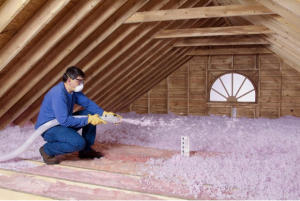
Proper insulation is essential for creating and maintaining a comfortable indoor environment in commercial buildings while simultaneously reducing overall energy consumption. The choice of insulation materials is a critical factor in achieving these goals. Upgrading to materials with higher R-values, such as spray foam insulation or rigid foam boards, represents an advanced approach. R-value measures the thermal resistance of a material – the higher the R-value, the better the material resists heat transfer. In the context of commercial buildings, these advanced insulation materials excel at preventing heat loss during winter and minimizing heat gain in the summer. This not only enhances energy efficiency, leading to potential cost savings, but also contributes significantly to the property’s sustainability. By integrating these insulation tools into commercial building upgrades, property owners not only improve energy efficiency and reduce operational costs but also actively contribute to a more sustainable and environmentally friendly property. Overall, this investment in superior insulation not only fosters a more comfortable and sustainable indoor environment but also positions the property as an energy-efficient and environmentally conscious asset.
Flooring Materials
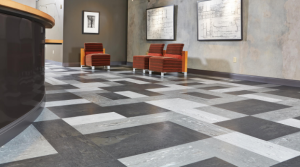
Commercial spaces experience heavy foot traffic, making durable and low-maintenance flooring essential. Elect for materials like luxury vinyl tile (LVT), which combines aesthetic appeal with resistance to wear and tear. LVT is available in a wide range of designs, providing flexibility in achieving the desired look for different commercial settings. Additionally, carpet tiles made from recycled materials can be an eco-friendly choice for office spaces, offering both comfort and sustainability.
Lighting Systems
Enhancing lighting systems offers a budget-friendly method to boost energy efficiency and elevate the overall atmosphere of a commercial space. Explore the option of replacing conventional incandescent bulbs with energy-efficient LED lights. LED lighting not only reduces energy consumption but also boasts an extended lifespan, thereby minimizing maintenance expenses. The integration of smart lighting systems, equipped with occupancy sensors and programmable controls, adds an extra layer of efficiency by ensuring lights are active only when necessary.
HVAC Systems

The heating, ventilation, and air conditioning (HVAC) systems are pivotal in sustaining a comfortable indoor atmosphere. Achieving substantial energy savings involves upgrading to high-efficiency HVAC systems. Select materials like energy-efficient air filters, programmable thermostats, and variable-speed motors to elevate the system’s overall performance. Upgrading to a commercial generator enclosure offers a multifaceted solution for businesses seeking reliable power backup. The enclosure provides a secure and dedicated space for the generator, shielding it from environmental elements, potential theft, and vandalism. Beyond security, these enclosures are designed to reduce noise levels, making them suitable for environments where sound control is crucial. Compliance with local regulations is another significant benefit, as many jurisdictions mandate the installation of generator enclosures. The aesthetic appeal of these enclosures is not overlooked, as they can be customized to seamlessly integrate with the architecture of the property, maintaining a professional appearance. Weather resistance ensures the generator’s functionality in diverse climates, contributing to extended lifespan and reduced maintenance costs. Enhanced safety features, such as ventilation systems, prioritize safe operation. Additionally, the availability of remote monitoring and customization options makes upgrading to a commercial generator enclosure a comprehensive and strategic investment for businesses looking to ensure continuous power supply while addressing regulatory, environmental, and operational considerations. Furthermore, consistent maintenance employing durable materials ensures the HVAC equipment’s longevity and reliability.
Exterior Cladding

The exterior of a commercial building not only influences its curb appeal but also plays a vital role in protecting it from the elements. Selecting the appropriate exterior cladding for a commercial building involves careful consideration of various options. Consider upgrading exterior cladding materials to those that are not only aesthetically pleasing but also durable and low maintenance. Vinyl siding, known for its affordability and versatility, offers a wide array of colors and styles. Wood cladding provides a traditional and natural aesthetic but requires regular maintenance. Fiber cement siding stands out for its durability, resistance to fire and moisture, and versatile appearance. Brick cladding, timeless and durable, adds a classic touch to structures. Metal cladding, such as steel or aluminum, lends a modern and industrial look, though it may be susceptible to dents. Stone veneer offers a luxurious appearance with less weight than full stone. Aluminum Composite Material (ACM) panels systems present a lightweight, customizable, and weather-resistant option. Stucco provides versatility and resistance to fire and insects but requires periodic maintenance. Glass cladding, offering a modern and transparent look, allows for natural light but may necessitate maintenance of glass surfaces. Upgrading exterior cladding can give a commercial property a modern and fresh appearance while enhancing its resilience.
Security Systems and Access Control
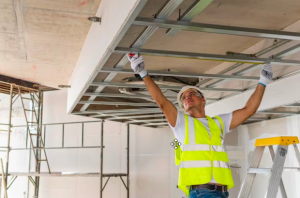
Within commercial settings, prioritizing security remains paramount. Essential for safeguarding assets and occupants’ safety, upgrading to cutting-edge security systems and access control materials becomes imperative. Incorporating sturdy doors crafted from durable materials such as steel and integrating sophisticated access control systems—featuring keyless entry and biometric authentication—enhances overall security. Consider security camera systems with high-resolution imaging and remote monitoring capabilities to add an extra protective layer to your property.
Strategic Material Choices: Elevating Commercial Properties for Long-Term Resilience
Selecting optimal materials for upgrades in commercial buildings involves a comprehensive decision-making process, considering aspects like durability, energy efficiency, aesthetics, and maintenance needs. Prioritizing critical areas such as roofing, windows, insulation, flooring, lighting, HVAC, exterior cladding, and security systems enables property owners and managers to make astute investments, elevating the overall worth and usability of their commercial properties. Through the use of appropriate materials, commercial buildings not only fulfill present requirements but also endure as resilient and sustainable structures for the long term.
Author Bio:
Sam Willis is a freelance writer that loves sharing his knowledge and expertise in residential and commercial real estate, as well as engineering and construction. He lives in Atlanta, Georgia where he enjoys spending time with his wife and researching real estate trends in his free time. Sam’s work as a freelance writer can be found on Building Product Advisor, a construction industry resource site.

